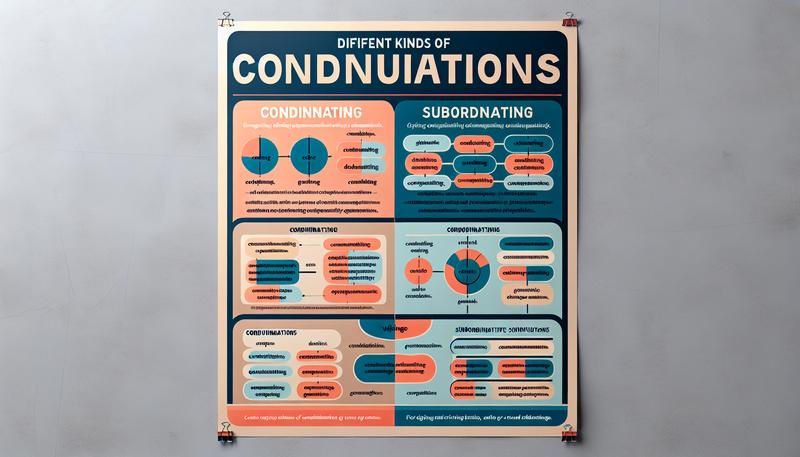「Welcome」是我們學習英文時最早接觸的單字之一,它的字義簡單明瞭,但在實際應用中,卻是許多華語使用者,甚至是英文程度不錯的人,最常犯錯的地雷區。
你是否也曾對外國朋友說過「Welcome to visit my house」?或是在商業廣告中寫下「Welcome you to our company」?這些看似熱情的句子,在母語人士聽來卻可能充滿了語法錯誤與誤會。對於需要面對國際商業趨勢的企業人士而言,這個看似簡單的字,其用法遠比我們想像的要豐富且細膩。
本文章將深入解析「Welcome」的四大詞性與正確使用時機,並整理常見的台式錯誤用法,更會延伸探討如何用道地的英文表達「受歡迎」與「流行」,幫助你徹底掌握這個關鍵單字,自信地展現你的熱情與友善。
核心關鍵:搞懂「歡迎」的正確時機
要掌握「Welcome」,必須先建立一個核心觀念:動詞或感嘆詞形式的「Welcome」只應用於「客人已經到達」的當下。
中文裡的「歡迎」可以指事前的邀請(歡迎你明年再來),也可以指當下的迎接。但英文的「Welcome」在迎接的語境下,時間點非常明確。
常見錯誤場景:
這裡有幾個經典的例子:
一位市長在歡送外賓的宴會上熱情地說:
(X) We welcome you to visit us next year.
這句話會讓外國人誤以為,市長明年要親自去他們美國的國家「迎接」他們來訪。
一個大陸機場站出口處的標語寫著:
(X) Welcome you to visit!
這也是典型的中式英文,語法並不正確。
如何正確表達「事前的邀請」?
當你想邀請對方「未來」來訪時,應該使用表示「希望」或「給予許可」的句型,而非直接使用動詞「Welcome」。
正確說法:
- We hope you can visit our city again next year. (我們希望您明年能再次造訪我們的城市。)
- You are welcome to visit Taiwan anytime. (隨時都歡迎你來台灣玩。)
- Please feel free to come by my house this weekend. (歡迎這週末來我家坐坐。)
掌握 Welcome 的四種面貌:詞性用法深度解析
「Welcome」有四種詞性:感嘆詞、動詞、形容詞和名詞。理解它們各自的用法,是避免出錯的基石。
1. 感嘆詞 (Interjection) – 用於當面迎接
這是最直接的歡迎方式,用於客人抵達你面前的瞬間。
- 單獨使用:
Welcome! It’s so nice to see you. Come on in!
(歡迎!看到你真開心。快進來吧!) - Welcome to + 地點/組織:
Welcome to Taiwan! (歡迎來到台灣!)
Welcome to our company! (歡迎來到我們公司!) - Welcome + 副詞:
Welcome back! (歡迎回來!)
Welcome home, Dad! (爸,歡迎回家!)
Welcome aboard! (歡迎登機!/ 歡迎加入團隊!)
註:「Welcome aboard」除了在登機時使用,也常用於歡迎新成員加入一個團隊或公司,是非常實用的片語。
2. 動詞 (Verb) – 表示「迎接」的動作或「樂於接受」
動詞用法的主詞和受詞必須明確,表示「誰歡迎誰」。
- 表示熱情迎接(主詞 + welcome + 受詞):
The host welcomed us with a big smile and then led us to our rooms.
(主人用燦爛的笑容迎接我們,接著帶我們進入後面的房間。)
Let’s welcome our very special guest.
(讓我們一起來歡迎我們的特別來賓。) - 表示樂於接受或支持(通常接受的是事物):
The restaurant welcomes any advice to improve its service.
(餐廳樂於接受任何能改善其服務的建議。)
The proposal has been widely welcomed by the public.
(這項提案受到了大眾的廣泛支持。)
3. 形容詞 (Adjective) – 表示「受歡迎的」或「令人愉快的」
形容詞用法非常靈活,也是修正中式英文的關鍵。
- 表示「受歡迎的」:
She was a welcome visitor. (她是一位受歡迎的來賓。) 這個 a welcome guest 的用法非常普遍。
Pets are always welcome in this restaurant. (這間餐廳總是歡迎寵物。)
The B&B owner made me feel very welcome. (民宿老闆讓我覺得自己很受歡迎。) - 表示「令人愉快的、正中下懷的」的意思:
The holiday was a welcome change/break/relief. (這個假期是一次令人愉快的改變/休息/放鬆。)
On a hot summer day, ice cream would be very welcome. (在炎熱的夏天,吃冰淇淋就太棒了。) - 實用句型 (be welcome to…):
- be welcome to do something (歡迎/儘管做某事): 用於友善地給予許可。
You are welcome to use my telephone. (我的電話你儘管用。)
Anyone is welcome to join us. (歡迎任何人加入我們。) - be welcome to something (歡迎/儘管拿走某物): 用於大方地提供物品。
I’m already full. You are welcome to my hamburger if you’re hungry. (我飽了。如果你餓,我的漢堡儘管拿去吃。)
- be welcome to do something (歡迎/儘管做某事): 用於友善地給予許可。
- 經典用法:
You’re welcome. (不客氣。)
在英式英文中,有時會說 You’re very welcome. 來加強語氣。
4. 名詞 (Noun) – 表示「歡迎、迎接」這件事
- 表示迎接的行為:
They gave us a warm welcome. (他們給了我們熱烈的歡迎。)
The actor got a tremendous welcome while walking the red carpet. (那名演員走紅毯時受到了極大的歡迎。) - 一個重要的片語:
outstay/overstay your welcome (逗留過久而不再受歡迎)
I left after two days – I didn’t want to outstay my welcome. (我兩天後就離開了——我可不想待到讓人討厭。)
常見錯誤用法總整理
為了讓您一目瞭然,我們將最常見的錯誤用法與正確用法整理成下表:
| 錯誤用法 (Incorrect) | 正確用法 (Correct) | 語境說明 |
|---|---|---|
| Welcome to visit Taiwan. | You are welcome to visit Taiwan. | 事前邀請對方來訪 |
| Welcome to visit Taiwan. | Welcome to Taiwan! | 對方已經抵達台灣時的迎接 |
| Welcome you to Taiwan. | I/We welcome you to Taiwan. | 動詞用法,主詞(I/We)歡迎你(受詞) |
| Welcome you to Taiwan. | Welcome to Taiwan! | 感嘆詞用法,句首不直接接受詞 |
| Welcome you to visit us. | We hope you can visit us. | 事前邀請 |
| Welcome you to visit us. | You are welcome to visit us. | 事前邀請,給予許可 |
延伸學習:「受歡迎」的多元英文表達
學會了「Welcome」,我們再來看看另一個相關卻不同的概念:「受歡迎 (Popular)」。在中文裡,我們可能會說「這家店很受歡迎」,但在英文中,除了 popular 之外,還有大量生動的詞彙可以讓你的表達更上一層樓。無論是在日常生活中、撰寫電影評論,還是在準備英文考試,這些詞彙都非常實用,能夠讓你的文字更具深度。
| 類別 | 英文詞彙/片語 | 中文解釋 | 例句 |
|---|---|---|---|
| 通用人氣 | popular | 受歡迎的,流行的 | She’s the most popular teacher in school. |
| well-liked | 廣受喜愛的 | A colleague described him as well-liked and respected by all. | |
| attractive | 有魅力的(因而受歡迎) | He is an attractive candidate for the job. | |
| 時尚潮流 | be all the rage | 風靡一時 | Those neon sneakers are all the rage among teenagers. |
| be the craze | 蔚為風潮 | Fidget spinners were the biggest craze among schoolchildren. | |
| in vogue | 時髦,流行 | Minimalist home decor is in vogue these days. | |
| trending | 正在流行,熱門趨勢 | Barbiecore is trending right now due to the success of the film. | |
| hot | 火紅的,熱門的 | The color pink is hot right now. | |
| 廣受好評 | widely acclaimed | 廣受讚譽的 | The restaurant has been widely acclaimed for its innovative menu. |
| sought-after | 炙手可熱的 | She is already one of Hollywood’s most sought-after actresses. | |
| iconic | 偶像級的,代表性的 | John Lennon gained iconic status following his death. | |
| 口語/非正式 | a hit | 非常成功/受歡迎的人事物 | The Beatles had a string of number-one hits in the 1960s. |
| talk of the town | 全城熱議的話題 | The celebrity’s shocking announcement has been the talk of the town. | |
| off the charts | (受歡迎程度)破錶 | The new restaurant is totally off the charts. | |
| chick magnet | (俚語)很受女性歡迎的男人 | I’m telling you, that monkey is a chick magnet! | |
| ladies’ man | 受女性歡迎的男人 | He has a reputation for being a bit of a ladies’ man. | |
| 變得受歡迎 | catch on | 開始流行起來 | I wonder if the game will ever catch on with young people? |
| gain ground | 逐漸普及,變得更受歡迎 | The Republicans are gaining ground in the southern states. |
這份表格整理了許多在國際影集中常見的用法,有助於企業與外國客戶拉近距離。
常見問題 (FAQ)
Q1: 我想邀請外國朋友未來到我家玩,最自然的說法是什麼?
A1: 最好的說法是使用邀請或給予許可的句型,例如:
・You should come over to my place sometime. (你什麼時候該來我家坐坐。)
・I’d love for you to visit my new apartment. (我很希望你能來參觀我的新公寓。)
・Feel free to drop by whenever you’re in the neighborhood. (你在附近時,隨時都可以順道過來。)
Q2: “Welcome to my house!” 和 “You are welcome to my house.” 有什麼不同?
A2: “Welcome to my house!” 是感嘆詞用法,用在你朋友已經站在你家門口,你開門迎接他時說的話。而 “You are welcome to my house.” 是形容詞用法,更像是一種邀請或聲明,意思是「我的家歡迎你(來訪)」,可以在事前說。
Q3: 我可以直接對一個人說 “Welcome you” 嗎?
A3: 一般不行。這是一個典型的中式英文語法錯誤。如果要使用動詞,必須有主詞,如 I welcome you。如果是迎接,則是用感嘆詞 Welcome! 或 Welcome to…。請避免使用 Welcome you 的句型。
Q4: “outstay your welcome” 是什麼意思?
A4: 它的意思是「待得太久而使主人感到厭煩」。這是一個很形象的片語,指你停留的時間超過了主人歡迎你的期限,暗示對方希望你離開。
總結
「Welcome」這個字雖然基礎,卻蘊含著豐富的語法細節,正如世界公民文化中心的島學程所強調的,精準用字是有效溝通的關鍵。只要牢記「當面迎接」與「事前邀請」的區別,並熟練其四種詞性的變化,就能輕鬆避免尷尬的中式英文。下次無論是迎接遠道而來的朋友,還是邀請同事參加活動,你都能更精準、更自信地表達。同時,也別忘了將今天學到的各種「受歡迎」的說法融入你的詞彙庫,無論是參加團體討論課程或日常交流,都能讓你的英文表達更加生動、道地!
